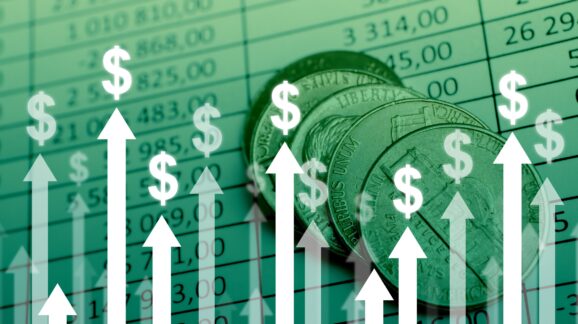CPI Slightly Up, Inflation Slightly Down?

Photo Credit: Getty
The Consumer Price Index (CPI) for May increased to an annualized 8.6 percent rate over the last year, reaching another new 40-year high. Even so, it’s looking more and more like inflation may have peaked. The CPI measures a lot of things besides inflation, which makes it an unreliable indicator. Much of the CPI’s May increase was from faster-than-inflation energy and food price increases. These were due to a combination of factors: Putin’s invasion of Ukraine, bad policies at home, and supply-and-demand changes, all of which are unrelated to inflation. Inflation price increases have to do only with the money supply. If it isn’t monetary, it isn’t inflation, and CPI can’t tell the difference.
To that point, the Core CPI number, which is better able to isolate inflation-related price increases from supply-and-demand noise, actually went down slightly, from 6.0 percent over the last 12 months ending in April to 5.9 percent over the last 12 months ending in May.
Given the timing, it makes sense that indicators are starting to crest and fall slightly. The Federal Reserve’s policy actions have lag times ranging from six to 18 months. Right now, that roughly lines up with most intense phases of the Fed’s nearly $5 trillion bond-buying spree during the COVID-19 pandemic.
The federal government’s multi-trillion-dollar COVID spending spree also added to the money supply, though by far less than the Fed’s actions did. Investors who bought government bonds to finance that spending would likely have invested their money in something else instead, not let it sit idle. That means deficit spending changes how existing money is spent, rather than adds new money into the economy, limiting its inflationary effects. If fiscal stimulus adds to inflation, it is by slightly increasing the velocity of money, or how fast each dollar is spent and spent again. Stimulus spending can also decrease output by redirecting spending from productive uses to politically directed ones.
An overlooked fact about inflation is that shrinking output increases inflation, even if the money supply stays the same. Likewise, economic growth is inherently deflationary. It changes the ratio of real output to the amount of money in circulation. All that means that overspending does contribute to inflation, but only by a small amount relative to the Fed’s ability to directly control the money supply.
The bill for the Fed’s policy mistakes is now coming due, but should taper off in the coming months. Note, however, that this relief may or may not show up in the CPI in the coming months. That depends on what happens with non-inflation price changes in food, energy, and other volatile goods. There is a reason the Fed stopped using the CPI years ago.
Inflation will likely stay high into next year, even in the best-case scenario. The Fed did not begin slowing down its money creation until March, and since then has taken only baby steps, in hopes of avoiding a recession. The price of that delay—which will add to a lag time of six to 18 months—will be a longer bout of high inflation.
We will get through this, but it will take time, and there isn’t much Congress or President Biden can do about it. Don’t listen to partisan politicians who claim they can fix it and blame the other party for something they cannot control.